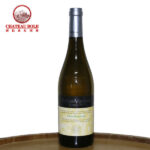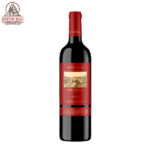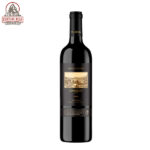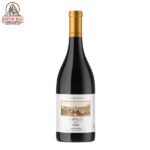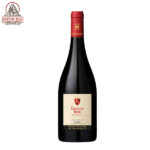Friuli-Venezia Giulia
Friuli-Venezia Giulia is an Italian wine region in the north east of Italy.
To learn more about Friuli-Venezia Giulia, please read on. If you’re interested to find more wines from this region, then scroll to the bottom of the page.

Once part of the Venetian Republic and with sections under the influence of the Austro-Hungarian Empire for some time, the wines of the region have noticeable Slavic and Germanic influences.
There are 11 Denominazione di origine controllata (DOC) and 3 Denominazione di Origine Controllata e Garantita (DOCG) in the Friuli-Venezia Giulia area. The region has 3 Indicazione Geografica Tipica (IGT) designations Alto Livenza, delle Venezie and Venezia Giulia. Nearly 62% of the wine produced in the region falls under a DOC designation. The area is known predominantly for its white wines which are considered some of the best examples of Italian wine in that style. Along with the Veneto and Trentino-Alto Adige/Südtirol, the Friuli-Venezia Giulia forms the Tre Venezie wine region which ranks with Tuscany and Piedmont as Italy’s world class wine regions.
History
The winemaking history of the Friuli-Venezia Giulia has been strongly influenced by the history of the Friuli and Venezia Giulia regions that were important stops along the Mediterranean spice route from the Byzantine Empire to the trading center of Venice. During the Middle Ages, travelers passing through this area brought grapevines from Macedonia and Anatolia. Under the Habsburg reign, the French grape varieties were introduced. Prior to the phylloxera epidemic over 350 grape varieties were grown in the region.
Geography and Climate
The Friuli-Venezia Giulia region is bordered by the Alps to the north separating it from Austria. Slovenia borders the region on the east and the Italian region of Veneto forms the western border and part of the southern border with the Adriatic Sea. The northern half is very mountainous and gives way to flatter terrain and plains on the way to the sea. The climate is distinguished with very warm days and chilly nights that help maintain a balance in the grape between acidity and sugar levels and allows the grapes a long, slow growing season. In summertime the mean temperature is around 73 °F (22.8 °C) with rainfall averaging 60 inches (1,530 mm).
Harvest normally takes place in September. The soils of the region vary from the calcium rich marl and flysch sandstone in the more hilly regions to clay, sand and gravel in the valley. The names of Friuli vineyards and wine estates often include the word ronco (plural ronchi), which is the Friulian word for a terraced hillside.
Most of the vineyards of the Friuli-Venezia Giulia are located in the southern half of the region, including the large wine regions of Collio Goriziano, Colli Orientali del Friuli, Isonzo and Carso. The Lison-Pramaggiore region is shared with the Veneto. Smaller regions such as the Annia, Aquileia, Grave and Latisana are located in the central and western part of the region around the city of Pordenone. These smaller regions are located on alluvial plains with soils composed of gravel and sand. The wines made here are lighter and less elegant than the Friuli wines made in the major southern wine regions. Unlike other Friuli regions which require 100%, a varietal wine in the Graves and Aquileia zones only need 85% of the grape variety with the Latisana and Annia zones requiring 90%. More red wine is produced in these zones than in the rest of the Friuli with Merlot, Cabernet franc and Cabernet Sauvignonbeing the leading varietals. With wine production still, frizzante and spumante styles are produced from Chardonnay, Pinot bianco, Pinot grigio, Friulano and Verduzzo.
Over 30 different grapes varieties are grown in the Friuli-Venezia Giulia including international varieties such as Chardonnay, Cabernet Sauvignon and Merlot as well as local varieties like Refosco dal peduncolo rosso, Schioppettino, Friulano, Ribolla gialla and Verduzzo. Of the local varieties, Friulano is the most well known and important variety, producing crisp, floral wines that develop notes of nuts and fennelas it ages. The grape was widely known as Tocai Friulano but in 2006 the European Union banned names that have some similarity or association with the Hungarian wine Tokaji. Now Tocai Friulano is called Friulano. The very acidic Ribolla gialla grape was primarily used as a blending component until winemakers started to apply the techniques used with Chardonnay (such as malolactic fermentation) to produce softer, more buttery wines that still retain the crisp, lemon edge of the grape. Wines made from Verduzzo have peach and nutty flavors in their youth but develop more honeyed flavors as the wine ages. The high acidity of the grape works well in sweet production and in regions like Ramandolo it is often dried to make a passito wine. The Picolit grape also does well in sweet wines where it can produce elegant, floral wines that have a dry finish. In contrast to the thin, sometimes bland Pinot grigio produced in other parts of the Tre-Venezie, well made examples of Friuli Pinot grigio are known for their fuller body and delicate peach, almond and green apple flavors. Sauvignon blancs are made in a style reminiscent of Sancerre with smoke, herbs and elements of honey and hazelnut. Some of the most expensive Friuli wines are made from the Picolit grape which is prone to grape diseases and mutations which cause the vine to lose its flowers and grape clusters. In most years, less than half of a vineyard Picolit crop will survive and be able to make wine. The light, honeyed dessert wine that it can produce is often in high demand because of restricted supply.
Along with the internationally styled Merlots, Friuli produces some distinctive red wines from the local grape varieties. Tazzelenghe (meaning “tonguecutter”) produces a very tannic and fruity wine that mellows as it ages but maintains a good amount of its fruitiness. The Schioppettino (meaning “gunshot” and sometimes called Ribolla nera) also produces very tannic wines with spice and pepper notes behind the ripe fruit flavors. The best known local red wine variety is the Refosco dal peduncolo rosso (different from regular Refosco) which produces a herbal full-bodied wine that ages well. Refosco is noted for its high acidity with blueberry and blackberry notes.
Showing all 2 results

